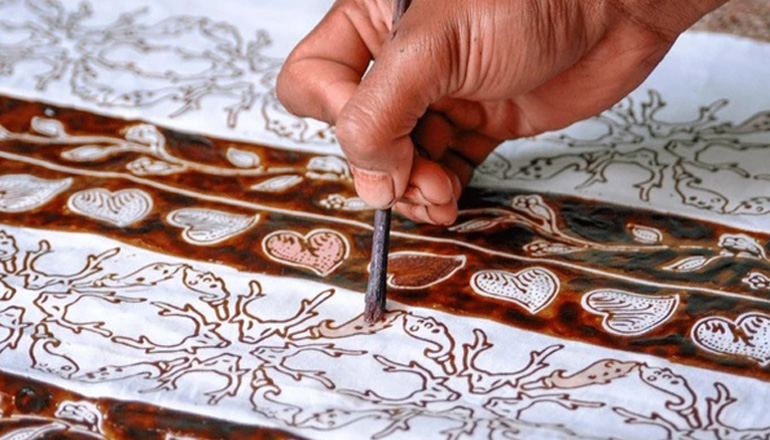Welcome to Indo Essentia Hudaya
-
-
Always here for you, open 24 hours!
Call Anytime
+62 857 7693 0572
Welcome to Indo Essentia Hudaya
Always here for you, open 24 hours!
Call Anytime
+62 857 7693 0572
Batik is a traditional art form that holds a deep cultural significance, especially in Indonesia, where it is considered a national treasure. Known for its intricate patterns and rich history, batik is more than just a fabric—it's a symbol of identity, creativity, and craftsmanship that has been passed down through generations. In this article, we will delve into the origins, process, and cultural importance of batik.
Batik has a long history that dates back to ancient times, with evidence suggesting its origins in the Java region of Indonesia. The word "batik" itself comes from the Javanese word "amba" meaning to write, and "titik", which means a dot or a point. This reflects the method used to create the fabric, where wax is applied to the fabric in intricate patterns, often in the form of dots and lines. Although Indonesia is renowned for batik, the technique of fabric decoration using wax can also be found in other parts of the world, such as West Africa and India. However, it is in Indonesia where batik has flourished and become deeply embedded in the country's culture and traditions.
The process of creating batik involves several intricate steps, with each stage requiring a high level of skill and attention to detail. The basic method of making batik is known as "wax-resist dyeing." Here’s an overview of how batik is made: 1. Preparing the Fabric The process starts with selecting the right type of fabric, usually cotton or silk, which will serve as the canvas for the batik design. 2. Designing the Pattern The design is drawn onto the fabric using a pencil or freehand sketch. Traditional batik designs often include motifs inspired by nature, such as flowers, leaves, and animals, as well as geometric shapes and symbolic patterns. 3. Applying Wax Once the design is sketched, hot wax is applied to the fabric using a tool called a canting (a small spouted tool) for fine lines or a cap (a metal stamp) for larger areas. The wax serves as a barrier that prevents dye from penetrating the fabric in certain areas. 4. Dyeing the Fabric After the wax has dried, the fabric is dyed in various colors. The areas that are covered with wax resist the dye, resulting in a beautiful contrast between the colored and uncolored sections of the fabric. 5. Removing the Wax After the fabric has been dyed and the desired color has been achieved, the wax is removed by boiling the fabric. This reveals the intricate design beneath the wax. 6. Finishing the Batik The final step involves finishing the fabric by pressing or ironing to set the design. The result is a vibrant, detailed fabric that showcases the craftsmanship and artistry of the maker.
Batik comes in various styles, each reflecting the unique culture and traditions of different regions in Indonesia. Some of the most well-known types of batik include: 1. Batik Solo Originating from Surakarta (Solo), Batik Solo is known for its delicate and harmonious designs, often featuring natural motifs such as birds, flowers, and geometric shapes. It is considered one of the most refined forms of batik. 2. Batik Yogyakarta Batik from Yogyakarta is recognized for its detailed and complex patterns, often with a royal influence. The designs may include symbols of Javanese mythology and traditional motifs passed down through royal courts. 3. Batik Pekalongan Pekalongan batik is known for its colorful, vibrant designs, often incorporating floral patterns and bright colors. This style reflects the influence of trade with other cultures, especially Chinese and Dutch, evident in the fusion of patterns and motifs. 4. Batik Madura Batik from Madura is famous for its bold and vibrant colors, with motifs that reflect the daily life and nature of Madura Island. The designs are typically more expressive and energetic compared to other types of batik. 5. Batik Bali Bali batik is known for its artistic and spiritual themes, often inspired by Balinese culture and natural landscapes. The colors are typically bright and bold, often featuring tropical motifs such as flowers, animals, and geometric patterns.
Batik is a true testament to the artistic ingenuity and cultural richness of Indonesia. From its intricate patterns to its symbolic meanings, batik is not just a form of fabric decoration—it is a reflection of history, tradition, and identity. The process of creating batik requires patience, skill, and an understanding of cultural heritage, making each piece a unique work of art. As batik continues to evolve and inspire new generations, its timeless beauty and cultural significance remain an integral part of the world’s artistic landscape.
0 Comments